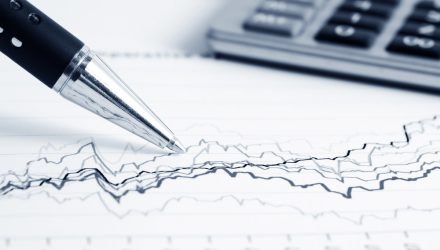As we consider risks in the fixed income markets today, investors can turn to smart beta bond exchange traded fund strategies to better position for the unusual environment.
In the recent webcast, Fixed Income is Back. Goldman Sachs Strategies for 2023, Alexandra Lawson, client portfolio manager, fixed income at Goldman Sachs Asset Management, argued that US yields they may peak as we approach the end of the current Fed hiking cycle. The divergence between the 2-Year US Treasury yield and the 10-Year yield in the periods that followed an interest rate hike cycle could be challenging for investors, especially when considering reinvestment risk on the shorter end of the yield curve.
“For investors seeking income generation, we believe the relatively stickier yields achieved by extending duration will provide a more durable source of cash flow going forward,” Lawson said.
Looking ahead, investors may consider turning toward the longer end of the yield curve, especially since long-term bonds have historically outperformed post Fed hiking cycles. Lawson noted that at the 24-month mark following the past three Fed hiking cycles, the Bloomberg US Aggregate Bond Index has averaged a yield over double that of the shorter duration index. Additionally, higher starting yields may make any further rate spikes less painful.
“These future yield advantages are similarly powerful for munis, where we also observe supportive fundamentals,” Lawson said. “As the calendar flips forward, investors may find attractive yields when adding on duration, across both municipal and taxable bonds.”
As we consider ways to approach today’s markets, Joshua Gorelik, senior manager, FIMA Index Applied Research at FTSE Russell, highlighted a rules-based approach to active portfolio construction. Specifically, he focused on the FTSE Russell Smart Beta Indices.
FTSE’s strategy is to establish fixed income factors determined through testing and empirical evidence to achieve an active style framework in a passive setting implemented through rule based index construction. Through the use of bond screens and optimizations, FTSE Russell built numerous systemic strategies considering fixed income factors that have demonstrated proven performance tailored to various market cycles.
“Development of ETF’s based on smart beta indices allow investors direct and transparent exposure to multi-factor investment strategies with improved risk-return profiles,” Gorelik said.
Specifically, Gorelik highlighted the quality, carry and seasoning/liquidity factors in the fixed-income space. Bonds issued by lower quality companies tend to underperform and bear more risk. Bonds with higher rolling yield returns tend to perform better than bonds with lower yields. Lastly, bonds that are less seasoned may be more expansive and underperform comparable bonds with similar maturity and duration characteristics.
Gorelik explained that depending on the type of screen, the smart beta strategy is designed to eliminate or mitigate uncompensated risks. For example, the quality screen aims to reduce credit risk exposure of issuers that are most vulnerable and subject to underperformance, while also reducing overall portfolio volatility. The seasoning screen demonstrated that a liquidity premium is paid for the latest issued Treasuries, acting as a drag on performance. Additionally, a seasoning screen applied to mortgages (in combination with convexity considerations) can serve as an indirect method to reduce prepayment risk. Carry optimization can identify specific parts of the term structure to maximize expected returns while still duration matching back to the base. Meanwhile, the liquidity screen serves as a mechanism to minimize exposure to the least liquid issues that are subject to distressed pricing under times of market stress.
“These approaches provide an edge under various market cycles,” Gorelik added.
Goldman Sachs Asset Management offers a suite of Access ETF strategies to provide intelligent market exposure with a focus on risk-adjusted returns through a competitive, transparent investment vehicle. The suite includes the the Goldman Sachs Access U.S. Aggregate Bond ETF (GCOR), the Goldman Sachs Access Investment Grade Corporate Bond ETF (GIGB), the Goldman Sachs Access Investment Grade Corporate 1-5 Year Bond ETF (NYSEArca: GSIG), the Goldman Sachs Access High Yield Corporate Bond ETF (GHYB), the Goldman Sachs Access Ultra Short Bond ETF (GSST), the Goldman Sachs Access Treasury 0-1 Year ETF (GBIL), the Goldman Sachs Access Inflation Protected USD Bond ETF (GTIP) and the Goldman Sachs Access Emerging Markets USD Bond ETF (GEMD).
Lawson noted that investors can use GBIL and GTIP to tackle rate markets. GCOR can be used for multi-sector exposure. Lastly, GSST, GIGB, GSIG, GHYB, GEMD can help investors target credit markets through various levels of exposures on both duration and credit risk.
Access ETFs seek to provide investors with exposure to a certain asset class or market beta.
“We aim to improve upon the exposure to the market beta rather than redefining it and seek to find intelligent methods to achieve this exposure,” Lawson said.
Access ETFs focus on risk adjusted returns by minimizing exposure to tail risk in fixed income markets.
“We believe the application of liquidity criteria, a technical or fundamental screen may minimize exposure to less liquid or fundamentally stressed securities,” Lawson added.
Financial advisors who are interested in learning more about the fixed income market can watch the webcast here on demand.
